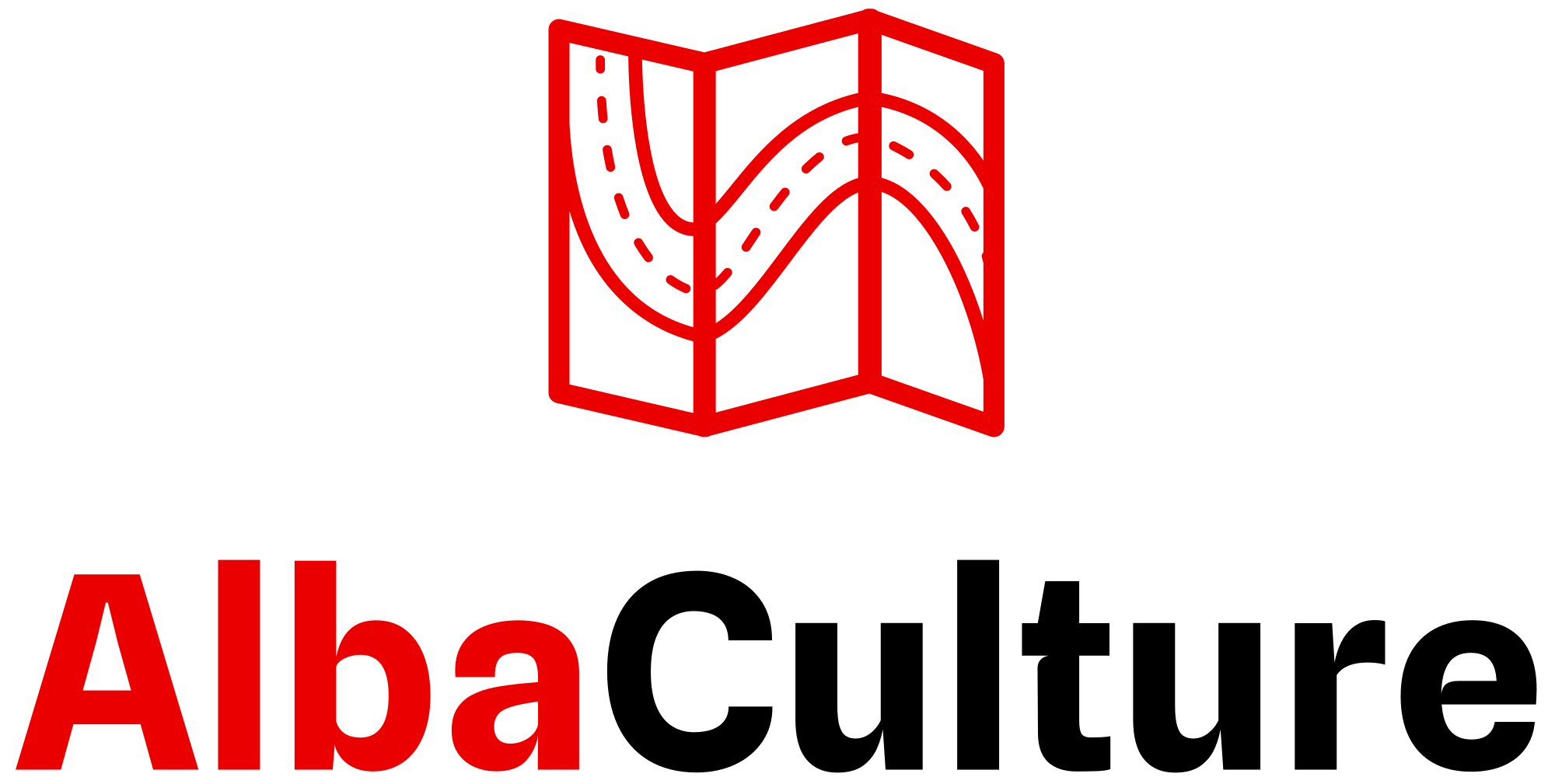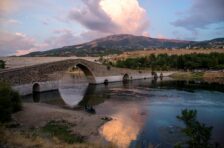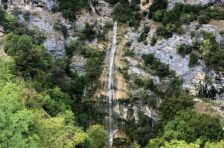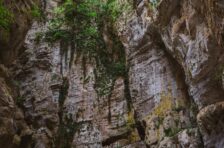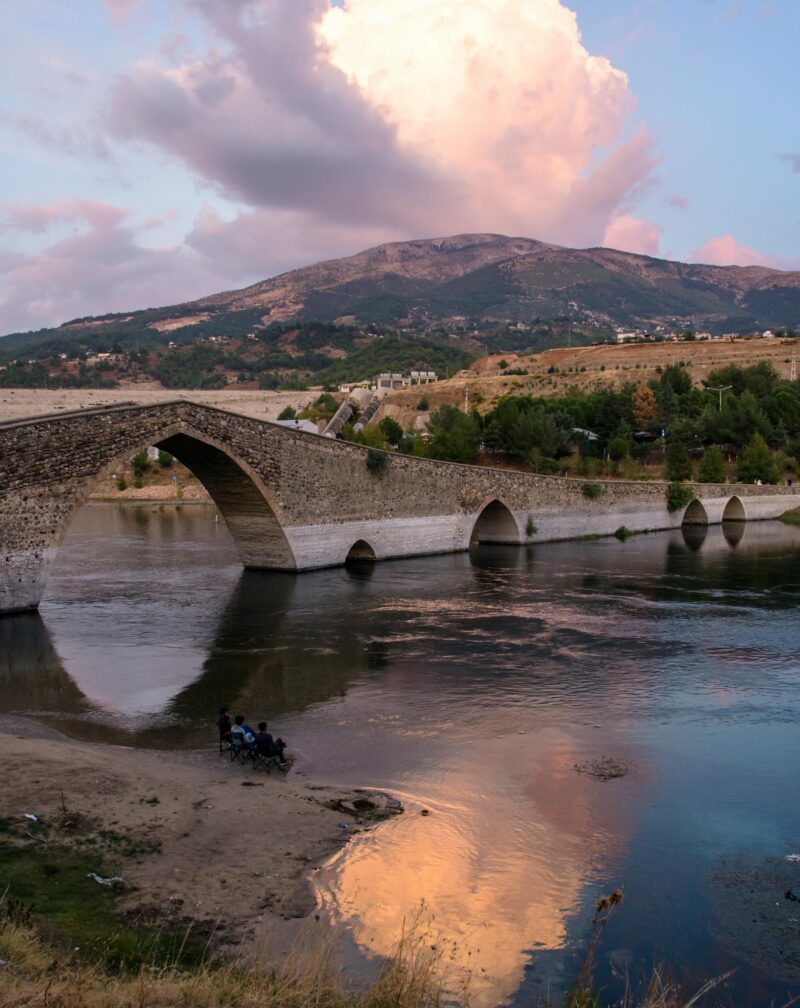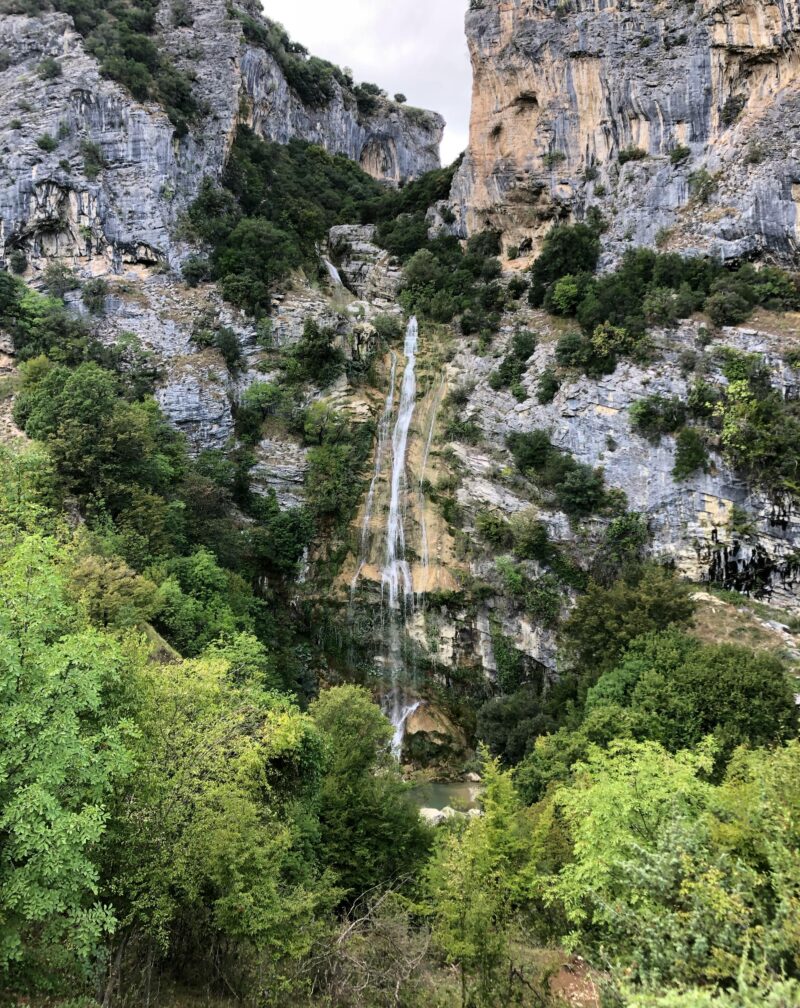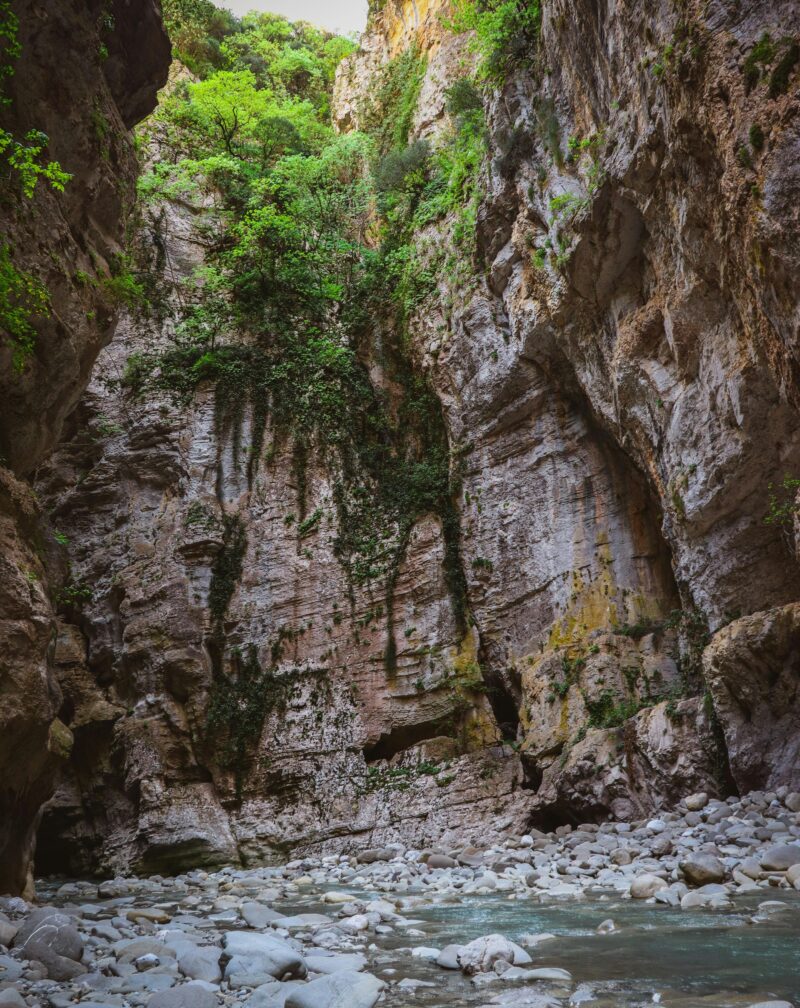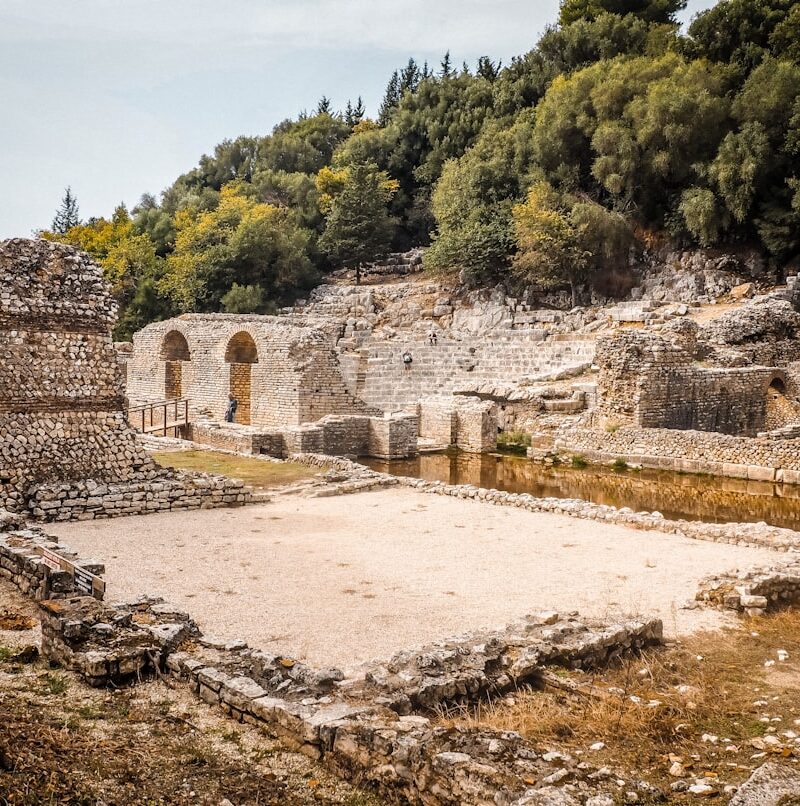The City of a Thousand Windows
Berat earned its UNESCO status for good reason. Ottoman-era houses cascade down hillsides, white facades punctuated by countless windows catching light at different angles throughout the day. The effect, particularly from across the Osum River, is genuinely beautiful.
But Berat isn’t just pretty architecture. It’s a functioning city where people live in those historic houses, maintain centuries-old traditions, and welcome visitors without feeling like they’re performing for tourists.
Berat Castle (Kalaja)
The castle dominates Berat physically and experientially. Unlike most castle ruins, this one is inhabited families live within the walls, maintaining homes that have existed for generations.
The walk up takes 15-20 minutes from the lower town. It’s uphill on cobblestones, so wear appropriate shoes. If mobility is an issue, you can arrange vehicle access to the upper gate for a fee.
Inside the walls, narrow lanes wind between houses. Residents go about daily life—changing laundry, tending gardens, calling to neighbors. Children play. Cats sun themselves on ancient stones.
Multiple Byzantine churches dot the fortress interior, most dating from 13th-14th centuries:
Church of the Holy Trinity has frescoes worth seeing if you can arrange access. Not always open—finding the keyholder requires asking locals.
Church of St. Michael sits near castle’s edge with views over the valley.
Church of St. Theodore is smaller but contains interesting architectural elements.
The Onufri Museum occupies the Cathedral of St. Mary’s Dormition. This is Berat’s highlight for many visitors—Albanian icon painting reached its apex with Onufri in the 16th century, and this collection showcases his work and his son Nikolla’s.
The icons use distinctive red pigment Onufri developed. Faces are expressive. Religious narratives are rendered with skill that transcends mere craft into art. Even visitors uninterested in religious art often find these beautiful.
The museum also displays the cathedral’s architecture and frescoes. Entry costs around 300 lek.
Walking the castle walls provides spectacular views—the Osum River valley, both historic quarters, mountains beyond. Different times of day offer different light. Sunset is popular but midday can be striking too.
Small cafes within the castle sell coffee and simple snacks. Sitting with coffee overlooking the valley is a pleasant way to spend an hour.
Mangalem Quarter
This is the “thousand windows” view everyone photographs—Ottoman houses built on hillside, each with large windows designed to maximize light before electricity existed.
Walking through Mangalem means navigating steep cobblestone streets, discovering small shops, observing daily life. Elderly women sit in doorways. Men gather at cafes. The neighborhood functions as a neighborhood, not a museum.
Architecture buffs notice details: wooden balconies, stone walls, the way houses are built directly against each other creating unified facades, window arrangements that give the district its character.
Bachelor’s Mosque (Xhamia e Beqarëve) dates from 1827 and shows elegant Ottoman design. You can usually visit outside prayer times. The interior decorations are restrained but beautiful.
King’s Mosque (Xhamia e Mbretit) is older, 15th century, with different architectural style. Comparing the two shows evolution of Ottoman Mosque design in Albania.
Several traditional houses occasionally open to visitors, showing interior layouts and decoration. These aren’t always open—it depends on owners’ schedules and inclination. It is worth asking locally if any are accessible during your visit.
Gorica Quarter
Across the river, Gorica was historically the Christian quarter (Mangalem was Muslim, though this division is more historical than current). The architecture is similar—stone houses, wooden elements, narrow streets.
The Gorica Bridge connecting the quarters was built in 1780, destroyed multiple times by floods, and rebuilt. The current structure dates from 1920s reconstruction but maintains Ottoman design.
Walking across offers classic photo opportunity—bridge in foreground, Mangalem’s white house’s rising behind.
Climbing into Gorica’s upper streets provides the best vantage point for photographing Mangalem from across the river. Find the viewpoint paths—locals can point you to best spots.
Gorica is quieter than Mangalem, more residential, fewer tourist services. This makes it pleasant for walking when you want to escape crowds (though Berat never gets truly crowded outside peak summer).
Ethnographic Museum
Housed in 18th-century Ottoman house, this museum recreates traditional Albanian domestic life. Rooms show furniture, tools, clothing, and decorations typical of wealthy families during Ottoman period.
It’s small—you can see it in 30-40 minutes. But it provides context for the houses you see throughout Berat, showing how people actually lived in these structures.
Entry costs a few hundred lek. English information is limited, so having guide helps interpretation.
Lead Mosque (Xhamia e Plumbit) and Red Mosque (Xhamia e Kuqe)
Both date from 1555, built shortly after Ottoman conquest. The names come from their roof materials (lead) and external color (red painted stone).
They’re not always open to visitors but you can appreciate external architecture and their role in Berat’s urban landscape. Both show classical Ottoman Mosque design adapted to Albanian context.
Helveti Tekke
This Bektashi lodge sits in the Gorica quarter with beautiful gardens. The Bektashi order represents mystical Islam, and their lodges were centers of spiritual practice and community.
The tekke isn’t always open but when accessible, the gardens alone are worth visiting—peaceful, well-maintained, with mountain views.
Osum River
The river defines Berat geographically and provides recreational opportunities. In summer, locals swim at certain spots. The water isn’t pristine but acceptable for cooling off on hot days.
Walking along the river, particularly in the early morning or evening, offers a different perspective on the city. You see Berat from below rather than from within, appreciating its relationship to natural geography.
Small restaurants along the river serve traditional food at reasonable prices, often with better value than places in main tourist areas.
Wine Experiences
Berat region is Albania’s wine heartland. Several wineries offer tours and tastings:
Çobo Winery is very established, with proper tours, tastings, and sometimes meals. They focus on indigenous Albanian grape varieties. The facility is modern while incorporating traditional elements.
Alpeta Winery is smaller, family-run, offering more intimate experiences. Call ahead to arrange visits.
Nurellari Winery also welcomes visitors with advance notice.
These wineries aren’t in Berat city—they’re 15-30 minutes away. You need transport (taxi, rental car, or arranged transfer). Most hotels can arrange winery visits.
Tastings typically cost 1,000-2,000 lek depending on the number of wines and whether food is included.
Markets and Shopping
The weekly market (days vary, ask locally) brings vendors from surrounding villages selling produce, cheese, bread, clothing. It’s functional market for locals, interesting for visitors wanting to see Albanian rural-urban commerce.
Small shops sell traditional crafts—woodwork, textiles, copper items. Quality and prices vary. Berat isn’t a shopping destination like Krujë’s bazaar, but you can find authentic items.
Hiking and Nature
Tomorr Mountain looms above Berat, sacred to Bektashi Muslims. A pilgrimage happens annually to a mountain shrine. Hiking to the summit is a serious undertaking requiring a full day and good fitness.
Less ambitious hikes exist in the hills around Berat. Ask locally about trails—they’re not always well-marked but local hikers can provide directions.
Osumi Canyon is about an hour away, offering spectacular gorge scenery and adventure activities (rafting, canyoning) if you want outdoor experiences beyond Berat city.
Food in Berat
Traditional restaurants serve regional specialties. Berat’s cuisine includes dishes common across Albania but with local variations.
Peshk në tavë (baked fish) uses river fish—ask for it if available.
Qofte (meatballs) are good everywhere, but Berat’s are particularly well-seasoned.
Oshaf (dried fruit compote) is a traditional sweet served at meals.
Wine obviously pairs well with meals given local production.
Restaurants in historic houses offer atmosphere—eating in Ottoman-era buildings with traditional decoration. Prices are reasonable, typically 800-1,500 lek for main courses.
Practical Matters
Getting There: Buses from Tirana run regularly, taking about 2 hours. The cost is around 400-500 lek. Buses and furgons also connect Berat with Gjirokastër, Vlora, and other cities.
Where to Stay: Hotels and guesthouses range from budget to upscale. Staying in traditional houses in Mangalem or Gorica adds to the experience. Book ahead in summer, less necessary in off-season.
How Long: Two nights (one full day) covers main sights at reasonable pace. Three nights allows deeper exploration, wine tours, and relaxation. Day trips from Tirana are possible but rushed.
When to Visit: April-May and September-October are ideal—good weather, fewer crowds. Summer gets hot at midday, but evenings are pleasant. Winter is quiet and atmospheric though cold.
Getting Around: Berat’s old quarters are pedestrian only—cobblestones and stairs. The town is compact and walkable. Taxis exist for reaching accommodation or wineries outside the center.
The Berat Experience
Berat rewards slow exploration. Rush through in a few hours and you’ll see architecture. Stay longer and you experience the rhythm—morning light on white walls, afternoon quiet when shops close for lunch, evening promenades along the river, the call to prayer echoing off mountains.
It’s one of few places in Albania where tourism feels integrated rather than imposed. People live in the UNESCO zone, not displaced by it. Houses are homes, not museums.
The challenge is that Berat’s attractions are simple—walk around, look at buildings, visit churches and mosques, eat traditional food. There’s no single must-see monument or experience. The whole town is the attraction.
This disappoints some visitors expecting more “activities.” It delights others who value atmosphere and beauty over checkboxes.
If you’re a person who can spend hours wandering photogenic streets, sitting in cafes watching life pass, appreciating centuries-old architecture, Berat will charm you completely. If you need constant stimulation and structured activities, you might find it pleasant but not compelling.
Most visitors were impressed. It’s a rare combination—genuinely beautiful, historically significant, authentically inhabited, and accessible without being overrun. That balance won’t last forever as tourism grows, so visiting while Berat maintains this equilibrium makes sense.



